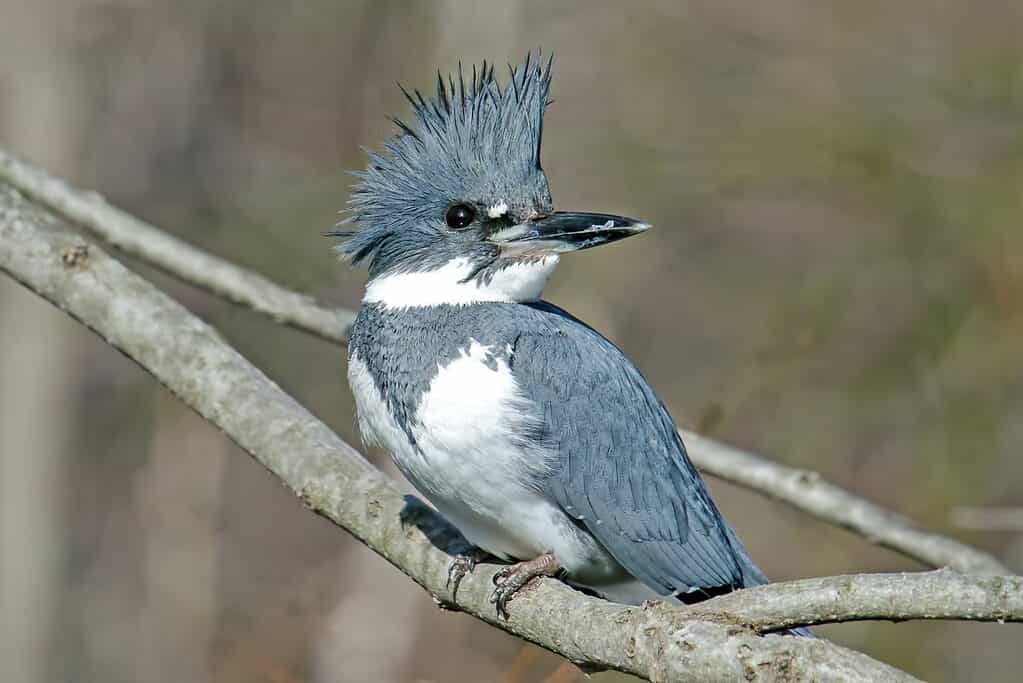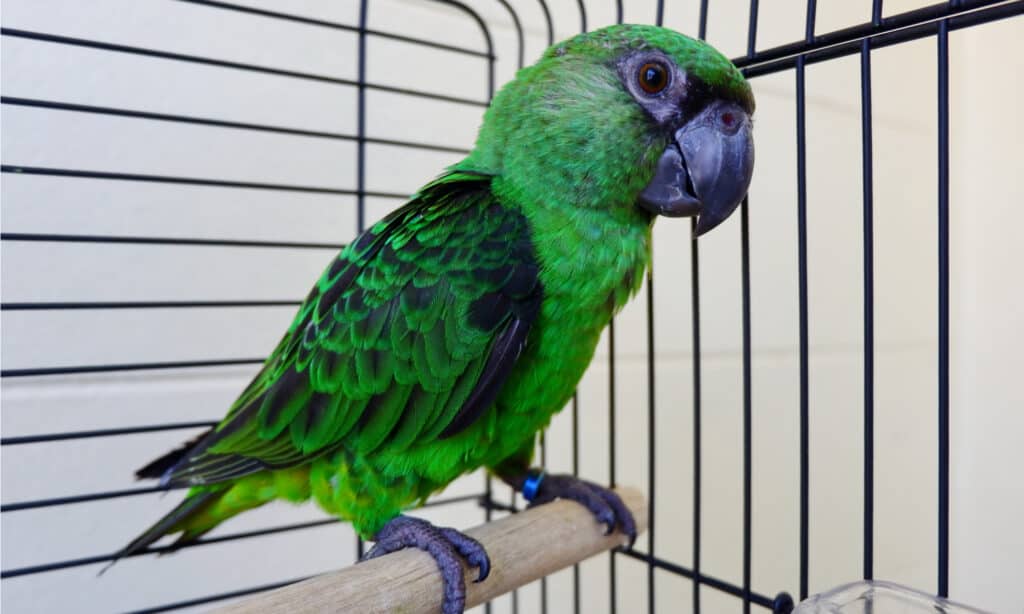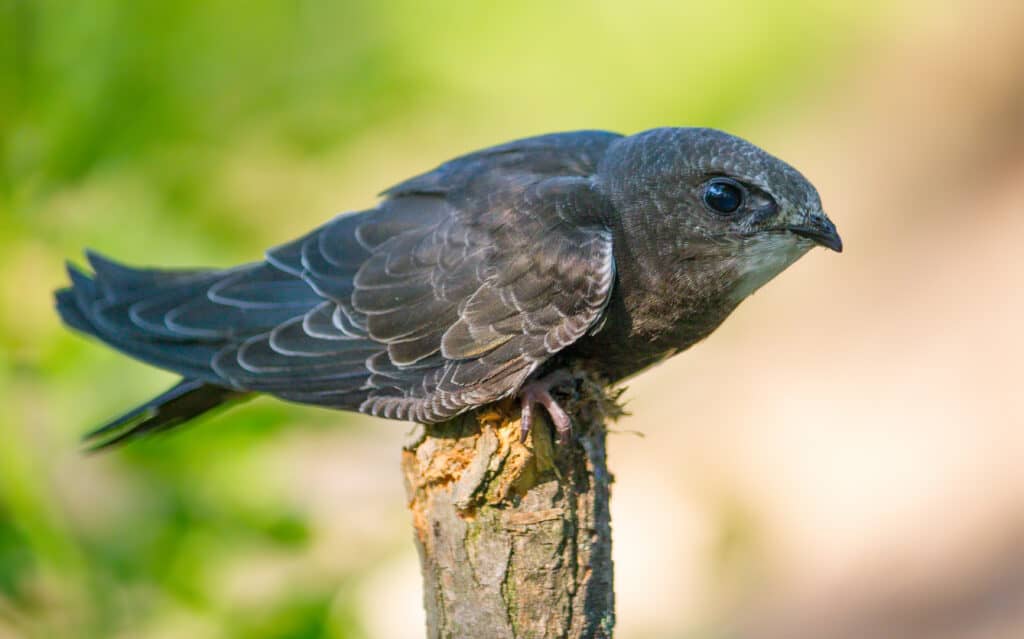Bird claws are diverse and vary between different species. Their role is essential for a bird’s survival, lending to more than just perching or grasping. Claws have many functions for each bird, including climbing, swimming, carrying, scratching for food, cradling eggs, building nests, preening feathers, and accelerating take-offs. Discover five types of bird claws and learn about their functions.
Why Do Birds Have Different Types of Claws?

Bird feet have adapted over time to give individuals the best chance at survival in their natural habitats. Foot types are used in avian classification.
©iStock.com/Andrew_Howe
Every bird species is unique to its environment and they need feet that function properly in that environment. Claws serve as a tool to help birds live in their habitats and find food. Some birds simply perch on branches, while others climb trunks. Their perching surfaces can be different, as well. The claws of a bird that sits on flat surfaces will be different from those that cling to small twigs. Bird feet have adapted over time to give individuals the best chance at survival in their natural habitats, and foot types are also used in avian classification.
Types of Bird Feet and Their Functions
Discover five types of bird claws and learn about the birds that fit into each category.
Anisodactyly

These birds have three toes facing forward and the hallux (or first finger) backward. This is the typical bird claw in passerines, such as blackbirds.
©iStock.com/Ian Fox
The Anisodactyly digit arrangement is the most common type of bird claw in the world, including almost all songbirds and perching birds. The word means “without equal toes,” referring to the unequal arrangement of digits on the foot. These birds have three toes facing forward and the hallux (or first finger) backward. This is the typical bird claw in passerines, such as blackbirds, sparrows, and pigeons. But you can also find them on birds, like chickens and hawks. In fact, most birds of prey have anisodactyly feet. Raptorial feet are slightly different from passerine claws, featuring deep clefts and sharp, curved talons. Birds with backward facing first fingers have strong digits that allow them to perch comfortably on vertical surfaces, like trees and cliffs.
Syndactyly

Birds with these claws include belted kingfishers, bee-eaters, rollers, and other birds in the Coraciiformes group.
©iStock.com/BrianEKushner
The syndactyly toe arrangement is similar to anisodactyly, except the third and fourth toes are fused. The outer and middle toes combine throughout their length and feature a broad sole. Birds with these claws include belted kingfishers, bee-eaters, rollers, and other birds in the Coraciiformes group. Though some kingfishers have a missing third or fourth digit. This toe arrangement allows these birds to stand on flat or cylindrical surfaces.
Zygodactyly

Birds with zygodactyly toes include most parrots, woodpeckers, owls, ospreys, cuckoos, and some swifts and rollers.
©THANYAKRIS/Shutterstock.com
Zygodactyl means “yoke-toed” and refers to the arrangement of toe pairs. Birds with these claws have the inner and middle toes pointing forward and two backward. And the outermost front toe is reversed. This feature evolved in birds in different ways, with some being able to rotate the outer rear digit, while others with these claws only have three toes. Birds with zygodactyly toes include most parrots, woodpeckers, owls, ospreys, cuckoos, and some swifts and rollers. These claws are excellent for climbing and grasping squirmy prey with ease, especially in birds like owls and ospreys.
Pamprodactyl

This adaptation is typically only seen in swifts and mousebirds, which allows them to hang from branches and other objects.
©Alexey Tolmachov/Shutterstock.com
The pamprodactyl toe arrangement consists of all four toes facing forward. But some birds can rotate the outer two toes backward. This adaptation is typically only in swifts and mousebirds. It allows them to hang from branches and other objects. When all the toes are facing forward, they serve as hooks. These birds have very short legs and cannot walk or perch. They use their feet to hold onto vertical surfaces like a cliff or the wall of a house. They do not typically land on the ground. And if they do, they have difficulty taking off again.
Heterodactyl

Heterodactyl claws only exist in trogons, cavity-dwelling tropical birds. Their feet and legs are weak and short.
©iStock.com/USO
Heterodactyl claws only exist in trogons, cavity-dwelling tropical birds. This digit arrangement is similar to zygodactyly claws, but the third and fourth digits point forward, and the first and second point back. And the inner front toe (number two) is reversed. Because of their unique feet, there has been much discussion about what order the trogons belong to. Many believe they have no close relatives and must be their own order. Their feet and legs are weak and short, and they essentially are not able to walk beyond shuffling on branches.
The photo featured at the top of this post is © iStock.com/LoriSkelton
Thank you for reading! Have some feedback for us? Contact the AZ Animals editorial team.






